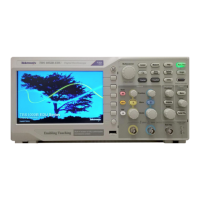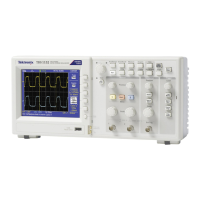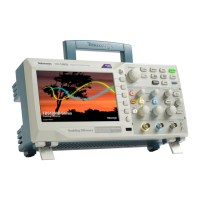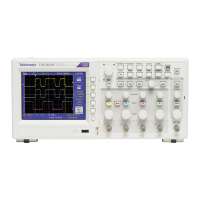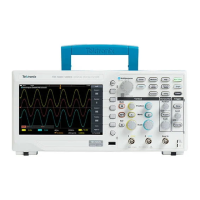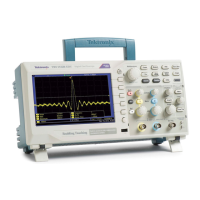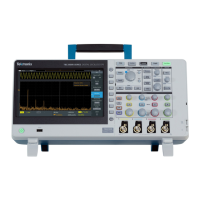Bandwidth of all trigger paths are similarly limited, except the Aux-In, which is not affected by BW
Limit function. Each channel is separately limited, allowing different bandwidths on different
channels of the same instrument.
Lower- Frequency limit, AC
coupled
This is the lower frequency for Analog Bandwidth when the instrument is AC-coupled.
≤ 10 Hz.
Rise time, typical
Model Expected full bandwidth rise time
TBS1202C 2.1 ns
TBS1102C 3.5 ns
TBS1072C 5.0 ns
TBS1052C 7.0 ns
Rise time is generally calculated from the following formula: Rise time in ns = 350 / Bandwidth in
MHz
√ Vertical position accuracy, offset
accuracy
This is the accuracy of the nominal voltage level represented by the code at the vendor of the A-D
converter's dynamic range.
± (0.01 X |offset – position | + DC Balance)
Vertical position ranges ± 5 divisions
Common Mode Rejection Ratio
(CMRR), typical
With the same signal applied to each channel, CMRR is the ratio of the acquired signal amplitude
to the amplitude of the MATH difference waveform, either (Channel 1 - Channel 2), (Channel 2 -
Channel 1)
Model Common Mode Rejection Ratio
TBS1202C
TBS1102C
TBS1072C
TBS1052C
100:1 at 60 Hz, reducing to 10:1 with 50 MHz
sine wave, with equal Volts/Div and Coupling
settings on each channel.
Crosstalk (Channel Isolation) Section 4.11.1 of IEEE std. 1057. It is the ratio of the level of a signal input into one channel to that
of the same signal present in another channel due to stray coupling.
Model Common Mode Rejection Ratio
TBS1202C (200 MHz models) >100:1 with 200 MHz sine wave and with equal
V/div settings on each channel.
TBS1102C (100 MHz models) >100:1 with 100 MHz sine wave and with equal
V/div settings on each channel.
TBS1072C (70 MHz models) >100:1 with 70 MHz sine wave and with equal V/
div settings on each channel.
TBS1052C (50 MHz models) >100:1 with 50 MHz sine wave and with equal V/
div settings on each channel.
Specifications
4 TBS1000C Series Specification and Performance Verification

